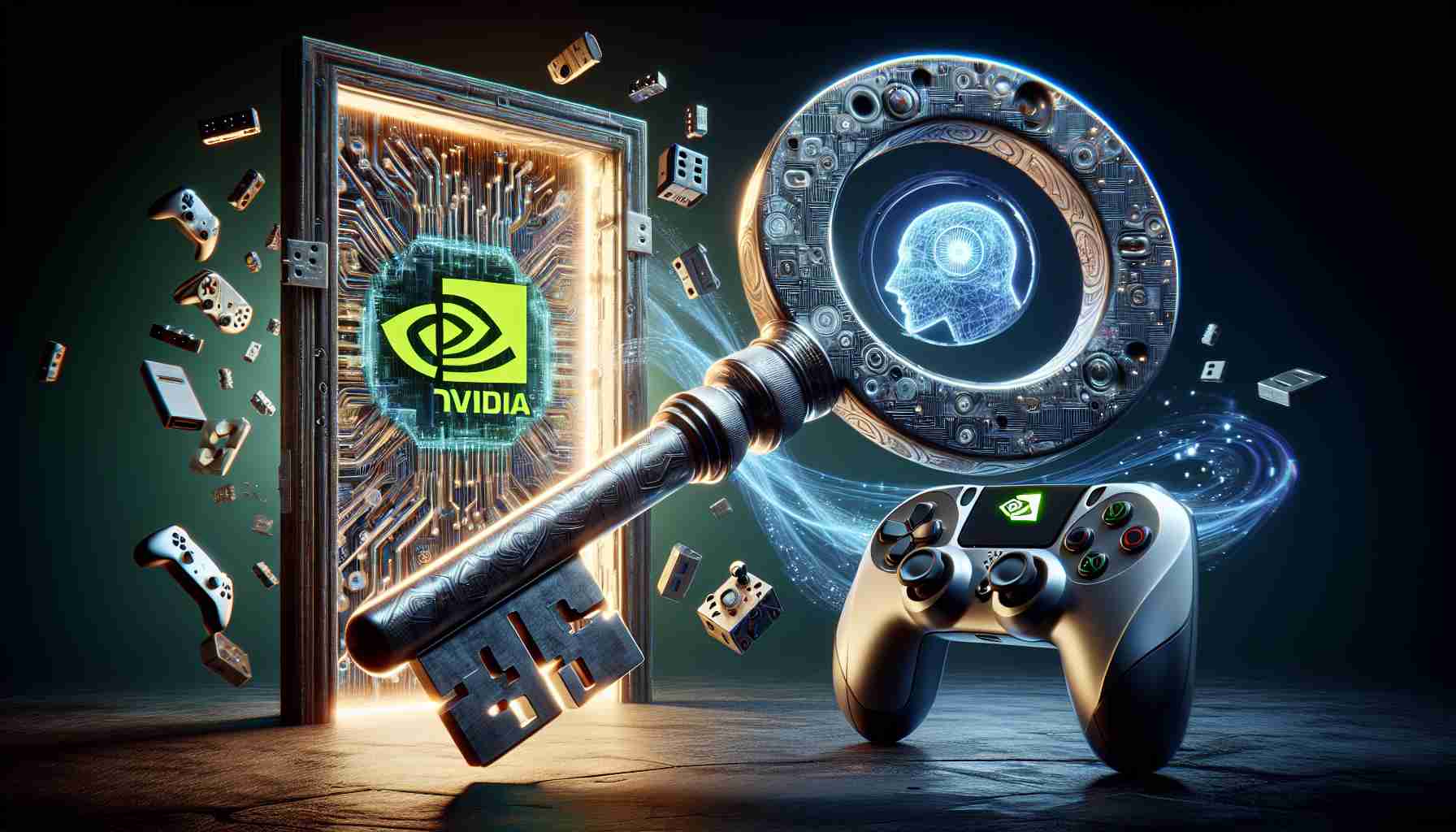- Nvidia is spearheading a transformation in gaming through advanced AI technology.
- The RTX 50 Series showcases innovations that elevate both graphics and the overall gaming experience.
- Neural rendering advancements herald a new era of interactive entertainment.
- Despite competition, Nvidia remains a trusted leader with its GTX and RTX graphics cards.
- Software tools like DLSS 4 and NVIDIA Broadcast enhance gameplay and immersion.
- The applications of AI in gaming and content creation are expanding rapidly.
- Nvidia’s commitment to AI positions it at the forefront of future gaming innovations.
The gaming universe is on the brink of a stunning transformation, largely thanks to AI, and Nvidia is leading the charge. Jesse Clayton, a seasoned Nvidia expert, highlights how AI is profoundly reshaping the gaming landscape. With the newly launched RTX 50 Series, Nvidia’s cutting-edge technology is not just about graphics; it’s about using AI to elevate the entire gaming experience.
Imagine engaging with games that not only look incredible but are also powered by neural rendering advancements, paving the way for an entirely new era of interactive entertainment. While competitors like AMD and Intel enter the GPU market, Nvidia continues to dominate with its high-performance GTX and RTX cards — a testament to years of optimization that gamers trust.
But it’s not just the hardware that’s impressive; Nvidia’s software also plays a pivotal role. Tools like DLSS 4 and NVIDIA Broadcast improve frame rates and enhance gameplay, seamlessly bringing players into immersive worlds. With AI integrations becoming essential in gaming and content creation, Nvidia ensures that every innovative leap is driven by advanced technology.
As we look ahead, Clayton emphasizes that AI is only getting started. From digital assistants to autonomous agents, the potential applications are limitless, restricted only by the capabilities of the technology itself. With ambitious projects like Nvidia’s DIGITS and powerful GPUs, the company aims to meet the soaring demand for AI computing.
In a nutshell, Nvidia is not just changing the game; it’s redefining what gaming can be. Get ready to experience an exhilarating future where AI makes every pixel count.
The Future of Gaming: How Nvidia’s AI Revolution is Changing the Game
The gaming universe is on the brink of a stunning transformation, largely thanks to the advancements brought by artificial intelligence (AI). Nvidia is leading the charge, and with their newly launched RTX 50 Series, they are not just elevating graphics—AI is poised to enhance the entire gaming experience. Here’s a closer look at the innovations, trends, and pivotal questions surrounding this technological shift.
Innovations in AI Gaming
Nvidia’s commitment to AI is reflected in several innovative offerings:
– Neural Rendering: Advanced techniques are improving how games render graphics, leading to highly realistic environments and characters.
– NVIDIA DLSS 4: This latest iteration of Deep Learning Super Sampling leverages AI to boost frame rates and image quality, making games smoother and more visually appealing.
– NVIDIA Broadcast: A software suite that utilizes AI to enhance livestreaming and video conferencing, providing game streamers with professional-quality broadcasts.
Market Trends and Forecast
The integration of AI in gaming is expected to continue growing, influencing both the game development process and player experience. The global gaming market, valued at approximately $160 billion in 2020, is projected to reach over $200 billion by 2023, with a substantial contribution from AI-driven features and technologies.
Use Cases of Nvidia’s Technology
1. Game Development: Developers are leveraging Nvidia’s GPUs for creating complex game environments efficiently with less time spent on rendering.
2. Enhanced User Engagement: Gamers benefit from more immersive experiences, where responsive environments react in real-time to player actions.
3. Content Creation: Streamers and video creators are utilizing AI tools to enhance the quality of their content, making it more engaging for audiences.
Pros and Cons of AI in Gaming
Pros:
– Significantly improved graphics and performance.
– Enhanced player experiences through immersive environments.
– Greater creative possibilities for developers.
Cons:
– Potential accessibility issues for those without cutting-edge hardware.
– Concerns over AI’s role in job displacement within game development.
Key Questions About Nvidia’s Impact on Gaming
1. How does AI improve gameplay experience?
AI enhances gameplay through features like adaptive difficulty, personalized gaming experiences, and improved environmental interactions. Technologies like DLSS increase performance allowing smoother experiences, especially in graphically intensive scenarios.
2. What are the implications for game developers using Nvidia technology?
Game developers have access to advanced tools that streamline the creative process, enabling them to focus on storytelling and gameplay mechanics rather than purely technical rendering. This shift can lead to more innovative game designs and sustainable development practices.
3. Are there limitations to Nvidia’s AI-based gaming technology?
Yes, while Nvidia’s technology is groundbreaking, it requires high-performance hardware, which might exclude a segment of the gaming community. Moreover, the complexity of integrating AI tools into existing game designs poses challenges for some developers.
With these innovations and discussions surrounding AI, the future of gaming looks bright. Nvidia is at the forefront of this revolution, providing gamers and developers with tools that not only redefine gaming experiences but also expand the possibilities of interactive entertainment.
For more insights into Nvidia’s technology and gaming trends, visit nvidia.com.




















